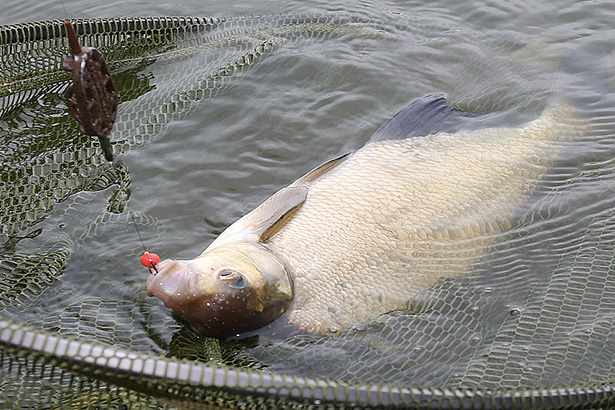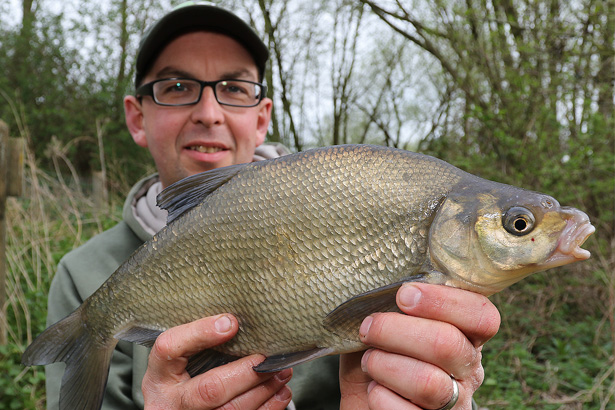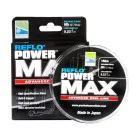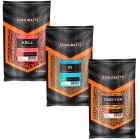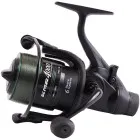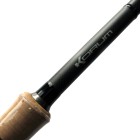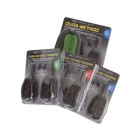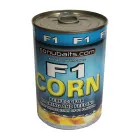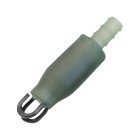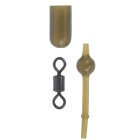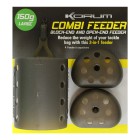Search
Big Waters, Big Bream - Bream Fishing On Gravel Pits
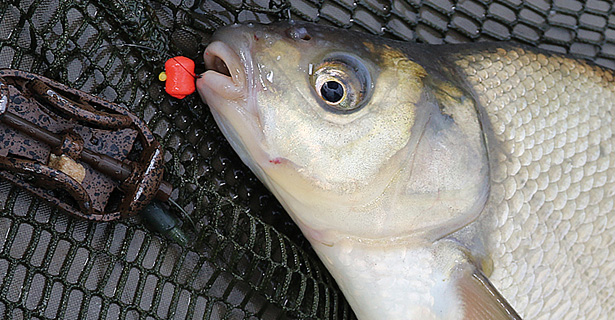

Gravel pits are great venues to catch large bream but they can be tricky to master. However, fear not, Dean, as we’ve enlisted the help of Korum bream supremo Rob Thompson, who can guide you into the path of a few slabs.
There’s no doubt that big bream thrive in big waters. With plenty of space to grow, and usually a lot of high-protein fishmeal baits fed by carp anglers, these fish are getting bigger and bigger. A number of large gravel pits, meres and stillwaters around the country have thrown up bream of huge proportions. We’ve joined Korum’s Rob Thompson on the banks of one such venue, to find out how he tackles a large expanse of water to catch a big, bronze bin-lid!
Driving up to the car park of Kingsbury Water Park on an overcast, unseasonably cold day, we meet Rob by his van, having walked around a couple of the various lakes that make up the complex.
“Unfortunately I’ve not seen any signs of fish on my walk. I thought I might see a fish roll but unfortunately that didn’t happen. It’s going to be a bit of a gamble on where I think the fish will be; going with my instincts I’m going to pick a peg right on the end of the wind on Swann Pool,” explains Rob, as he unloads his Ruckbag and chair from the van.
After walking his tackle to the swim, Rob removes his rods from the quiver and proceeds to set them up. Its obvious that he is looking to make the most of his fishing time, and with the fishing at Kingsbury being day-only, he’s keen to have his rods in the water for the maximum amount of time possible. Tied to the end of the reel line is a small bomb, which he is using to test the depth of the lake and find any likely looking spots on the bottom.
“A simple lead on the end of your line can tell you a lot about what is in front of you. You can do this with your fishing rods before you start – you don’t need extra expensive rods and reels. I’m using a 12ft 1.75lb Xpert rod, which has the power needed to cast feeders a very long way, but is soft in the tip to absorb the heavy lunges of a big bream,” remarks Rob, as he launches a lead out into the lake.
After trapping the line and letting the lead sink on a tight line, he slowly pulls the rod to the side, looking for features.
“If the rod locks up I could be stuck in a weed bed, which isn’t going to help present my rigs or bait! What I’m looking for is the rattle on the tip as my lead pulls over a nice patch of gravel, or an area of silt that is clear from weed. Trying to present small pellets and maggots in weed is a nightmare,” adds the Midland ace.
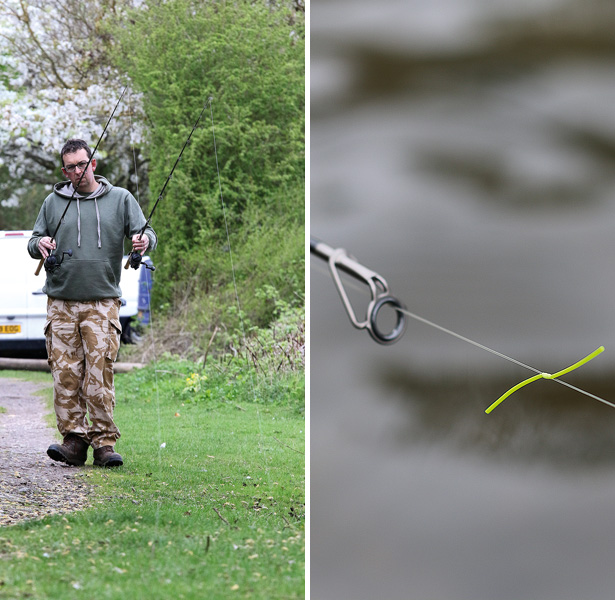
Having placed his line under the line clip he picks up his second, made-up rod and walks out his rigs along the bank. Once the line hits the clip, Rob can clip the second rod up at the same distance for accuracy. He then ties a small marker knot on the line using a short section of green Avid Carp Marker Elastic.
“The elastic ensures that I can take the line out of the clip while I’m fishing – should I hook a big fish, the line won’t break in the clip. It’s then a simple case of reclipping at the same distance after a fish, or when recasting.”
With the rods marked out, Rob runs us through his bait mix. He takes out a bag of 2mm F1 Feed pellets, one bag of F1 4mm F1 Feed Pellets, a tin of Sonubaits F1 Corn and a bait box with two pints of red and white mixed maggots.
“I’ll start by putting half a bag of 2mm pellets and half a bag of 4mm pellets into a groundbait bowl. To this I will add the water from the F1 Corn along with half a tin of the grains. After a couple of minutes the pellets will have softened slightly, helping them to sink. This little lot will be introduced into the swim via a small spod.
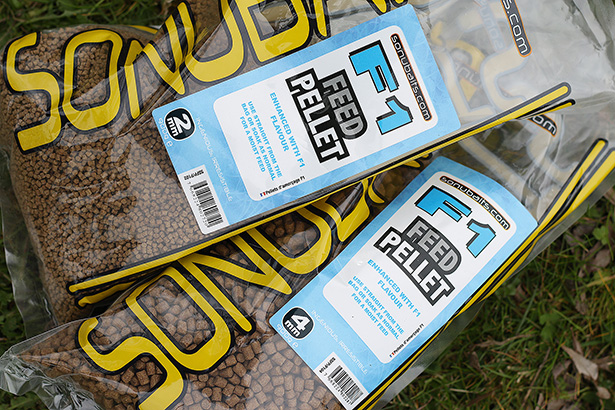
“Once I’ve introduced all of the pellet mix I will add a couple of spods full of maggots over the top. I can cast a small Avid Carp Air Range Spod with my fishing rods, using the same clip, and making baiting up easy and accurate!” states Rob as he introduces his bait into the swim.
“I’ve tried various different rigs for bream, but I find myself going back to two in particular – the Method feeder and a heli-rig with maggots. I like to fish different rigs, as there is always a chance that one hook bait can pick up more fish. By using a Method feeder, I know that my hook bait will be perfectly presented on the bottom, in the middle of a pile of pellets,” adds Rob.
His Method-feeder rig is made up using a 45g Korum Dura Method and this is stopped by a Korum Bolt Rig Dura Bead. This handy little bead allows him to change his hooklengths easily should they get damaged, and also semi-fixes into the base of the Dura Method for improved hooking.
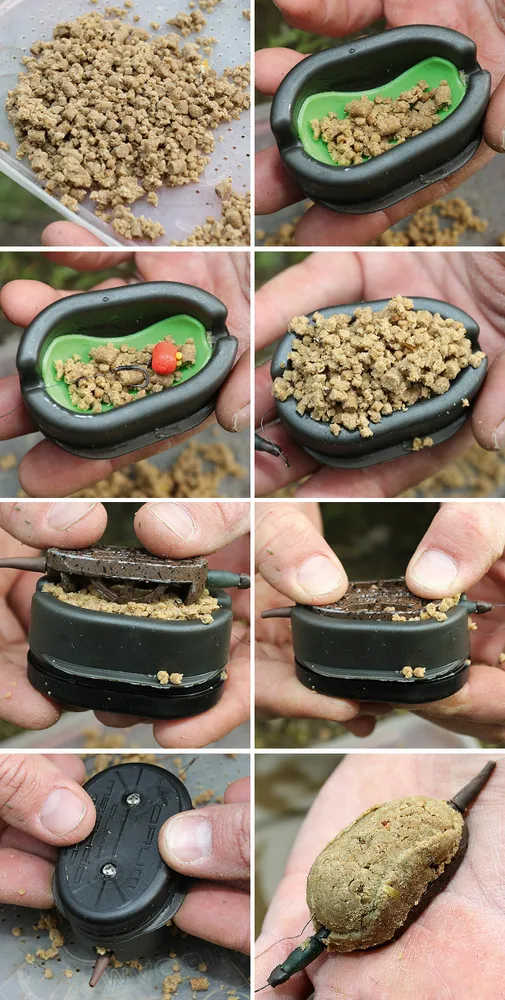
How To… Load A Dura Method Feeder Step 1: Start by dampening some pellets with lake water. Step 2: Place a small amount of pellets into the bottom of the Dura Method Mould. Step 3: Lay your hook bait into the Method mould. Step 4: Fill the mould with the dampened pellet mix. Step 5: Place your feeder onto the bait in the mould. Step 6: Press your feeder down to compress the bait onto the feeder. Step 7: Turn the mould upside down and press the release button until the feeder comes out. Step 8: Here’s the finished feeder, ready to cast out!
“On my second rod I’ll be using a helicopter rig. These rigs are great when you need to cast a long way, something that you’ll need to do on large venues, as they can’t tangle on the cast. I use a Korum Adjustable Heli-Rig for all of my helicopter-rig fishing.
“The problem with having a swivel on your line is that damage can occur when the heavy feeder is swinging around when playing a fish, and after time this can cause your main line to snap. The Korum Adjustable Heli-Rig has a moulded bead designed to protect your line from damage while you are playing fish, leaving you full of confidence that your line won’t part. All I need to do then is slide on the buffer bead, tie on a Combi Feeder and away you go,” a confident Rob explains.
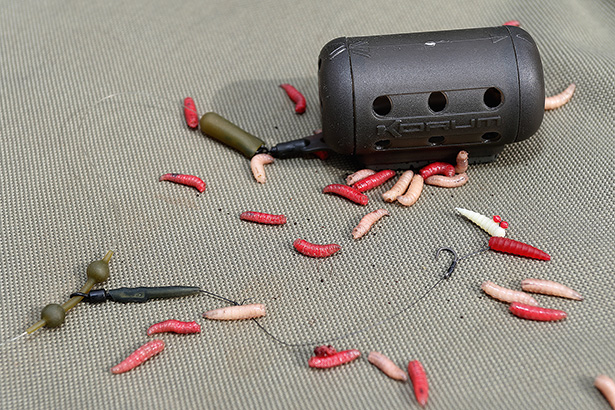
Onto the swivel of the Adjustable Heli-Rig goes a short 4in hooklength of 8lb Xpert Power Mono and a size 12 Xpert Specimen hook. It’s exactly the same hooklength as the Method-feeder rig, allowing him to make up plenty of hooklengths in advance and keep them stored ready for when he needs them. On the hair of the heli-rig are two artificial maggots, one red, one white. Artificial maggot hook baits will resist nuisance fish, but will still match the maggots that have been put into the swim. This is a great way of singling out bigger fish in the swim.
“Maggots will catch a lot of species of fish, that’s why I use them – they’re not just a bait that’s good for small fish! No fish, no matter how big, can resist a bed of wriggling maggots.”
Rob is recasting his rods every hour, putting more, fresh bait into the swim hoping to entice a big slab to feed.
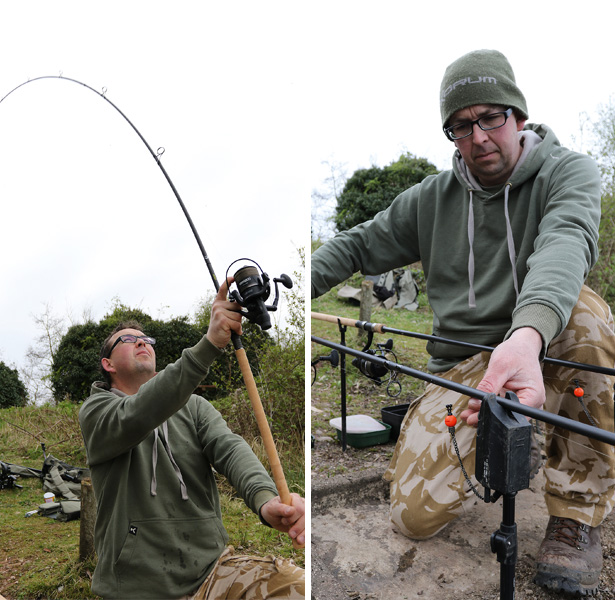
“A recast can be all that’s needed to gain the interest of some fish. Big bream fishing can be a waiting game. These fish usually swim around in big shoals, so when they eventually turn up, you could have multiple hits of fish. It’s important that there is some bait in the swim to hold the fish when they arrive. This is another reason for recasting my rods,” revealed Rob.
After a long and difficult day, trying various combinations of hook bait, different colours of maggots and trying all the tricks in the book, the bream just aren’t playing ball. With only an hour left before the park closes, the left-hand Method-feeder rod springs into action. The tight line drops right back and his alarm sings its tune. Lifting up the rod and winding down into the fish, Rob is met with a slow, nodding resistance.
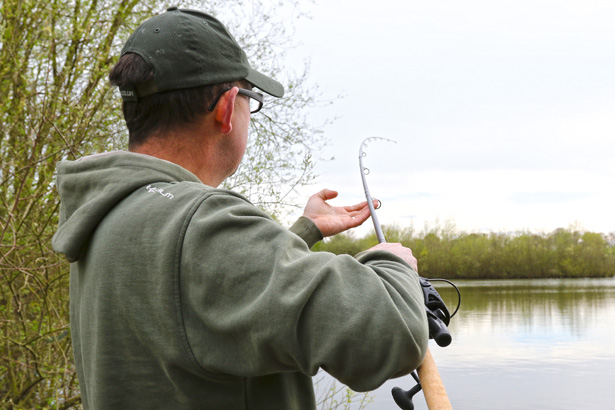
“Finally – the sound I’ve been waiting for! Unfortunately this fish doesn’t have the heavy weight of what I was expecting, but it’s a bream nonetheless. Fishing a big water can sometimes be daunting and will require a little patience – we can’t all catch monster fish every time we go fishing, but by following my simple advice, when those bream do turn up you’ll catch them!”
Tackle Box Korum Xpert Rods Korum KMR Method Runner Reel Preston Reflo Powerline Korum Xpert Hooks Korum Dura Method Korum Bolt Rig Dura Bead Korum Adjustable Heli-Rig Korum Combi Feeder
The Bait Box Sonu F1 Feed Pellets Sonu F1 Corn
